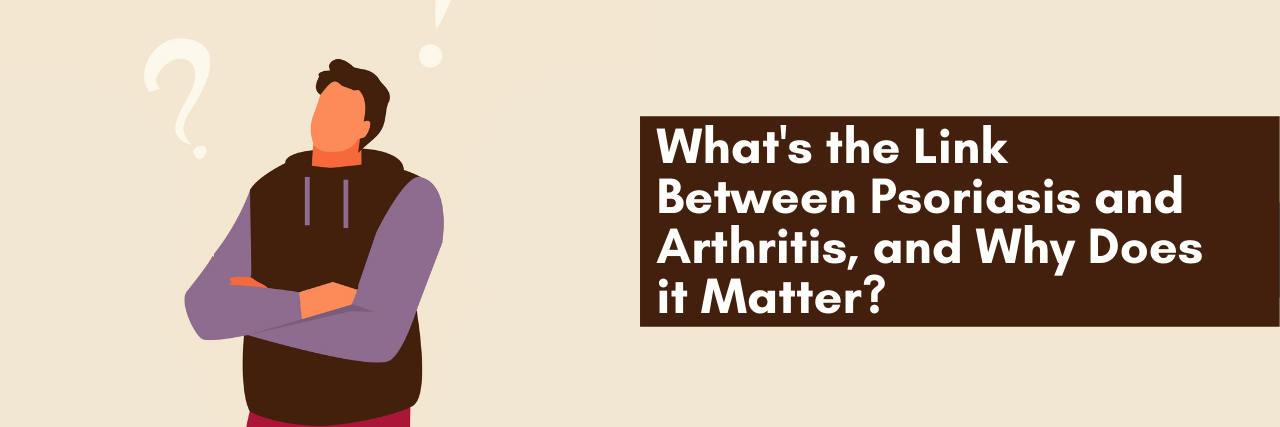It is a common misconception that psoriasis is “only” a skin condition. What people may not know, however, is that there are many aspects of living with psoriasis that can’t be “seen.” One hidden aspect of psoriasis that those who live with the condition often talk about is the effects psoriasis has on their mental health. When in a flare, psoriasis can cause visible rashes, bruising and flaking of the skin, which can make it difficult or feel embarrassing during social activities. Another part of psoriasis that isn’t often known and may even be surprising is the link between psoriasis and arthritis, an inflammatory condition that causes pain and stiffness in joints. In fact, there is even a unique diagnosis for this relationship called psoriatic arthritis (PsA).
So what’s the connection between these two conditions? How can a skin condition be related to a chronic pain condition in the joints? The truth is, scientists and doctors are still trying to figure out the answer to that question. But what we do know is that psoriasis and PsA are both autoimmune diseases that occur because your immune system attacks your own body instead of something foreign to you. Psoriasis and PsA are also both strongly linked to genetic factors, but we do not know exactly which genes are responsible. Interestingly, scientists estimate that 10 percent of the population carries genes associated with increased chances of developing psoriasis and PsA, though not all of those people go on to develop either disease.
If you do live with psoriasis, you’re probably wondering what your chances are of developing PsA. Unfortunately, there is no way to determine who exactly will develop PsA, but it is thought that people with generally more severe psoriasis on their skin are at higher risk for developing PsA. In fact, one out of every three people with psoriasis eventually develop PsA. PsA can even happen before the onset of psoriasis on the skin, but for most people, symptoms on the skin happen first.The development of PsA can be slow and relatively mild or quick and severe. The usual age for the onset of PsA is 30 to 50 years, but it has also developed in children.
Age and a history of joint injury are also associated risk factors. Smoking also increases your chances of developing PsA, especially if you’ve smoked for longer than 20 years. So why does understanding the connection between psoriasis and PsA matter? PsA can result in permanent joint damage and loss of mobility. Because a significant portion of people with psoriasis go on to develop PsA, it is important for psoriasis patients to be on the lookout for the early symptoms of PsA. These include pain in the joints or tendons, stiffness, especially in the morning, and swelling around the joints. In its milder forms, PsA often goes undiagnosed. However, it is important to begin treatment early to decrease your chances of permanent damage to your joints. Although there is no cure for PsA, there are a range of treatments available to help slow or stop the progression of the disease, decrease pain and protect your joints.

